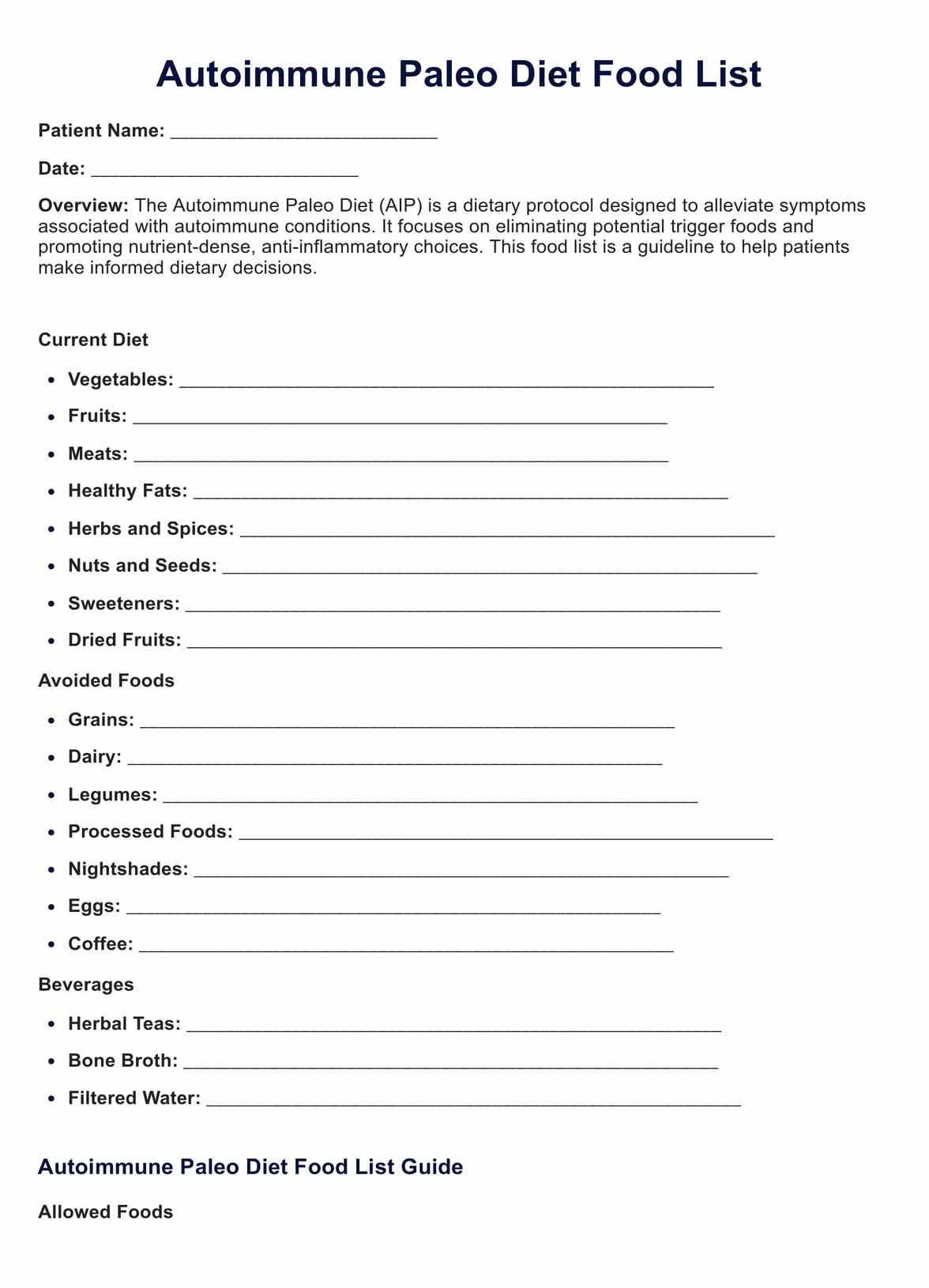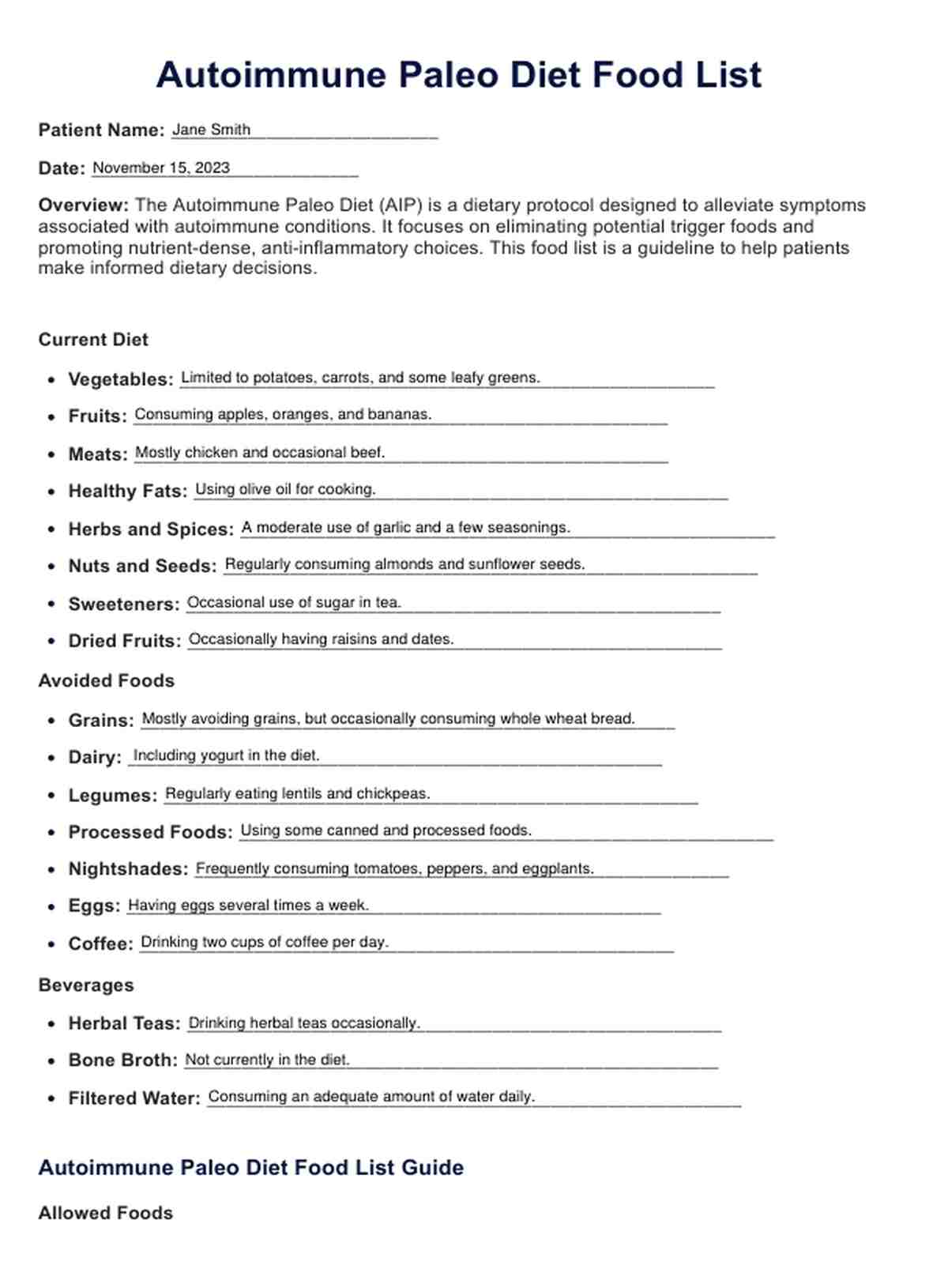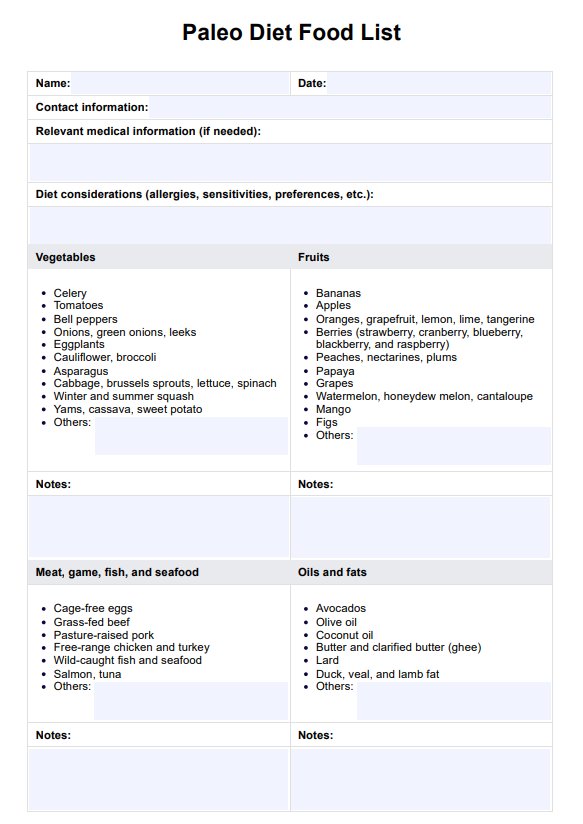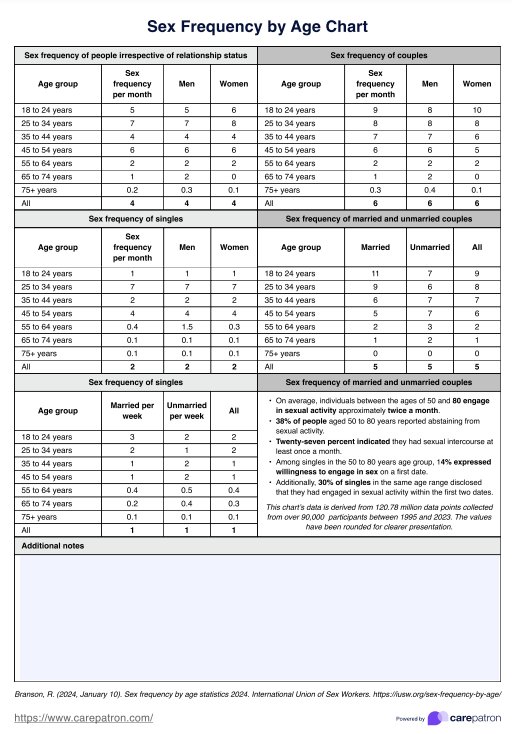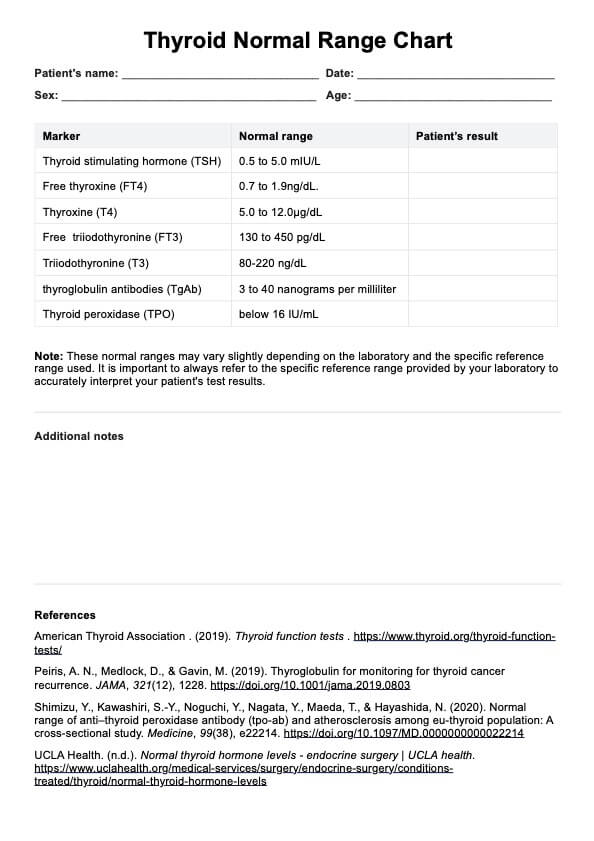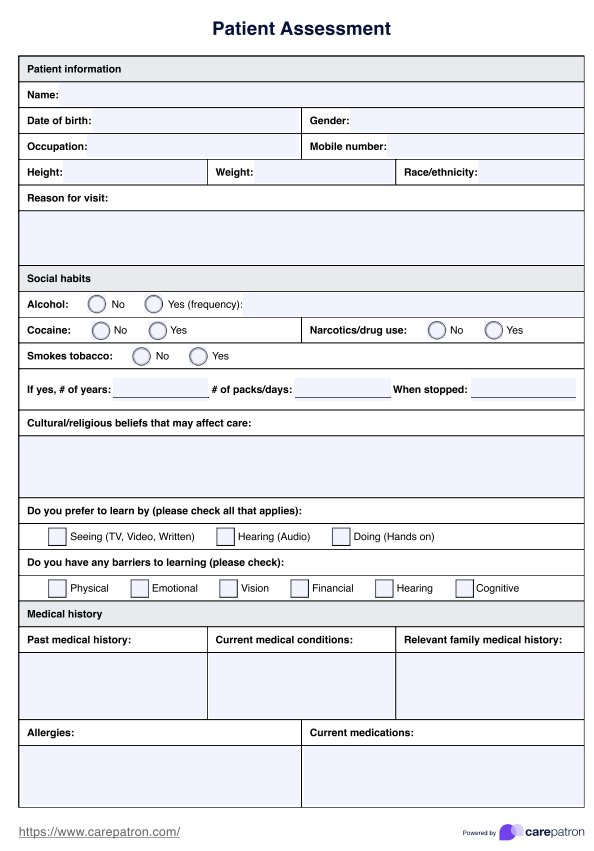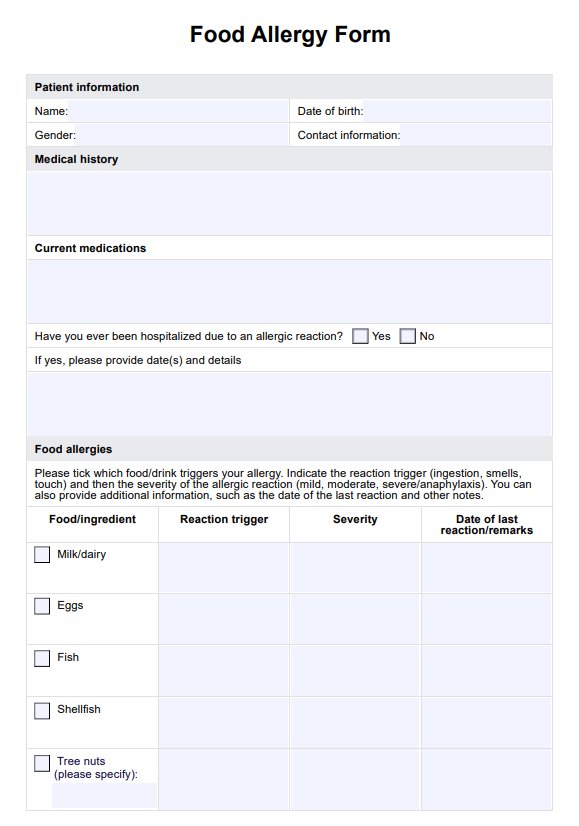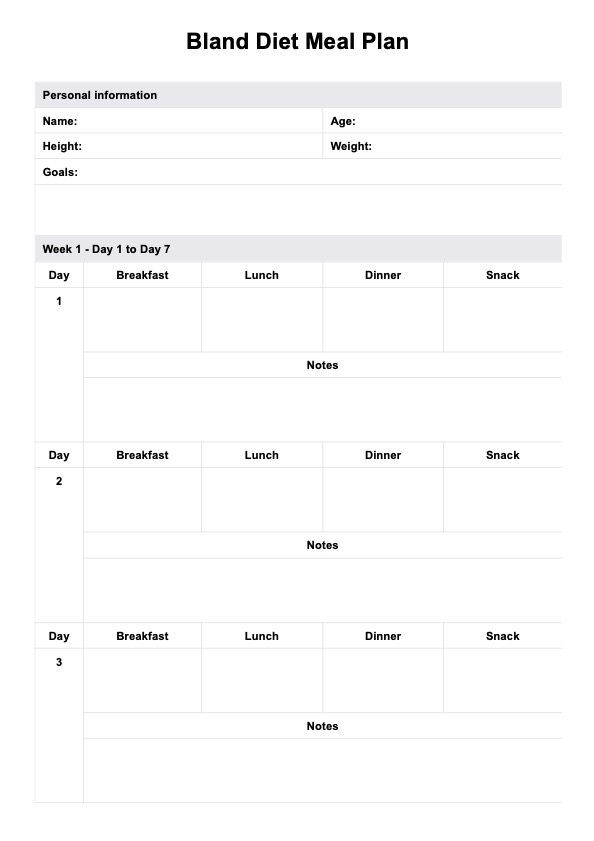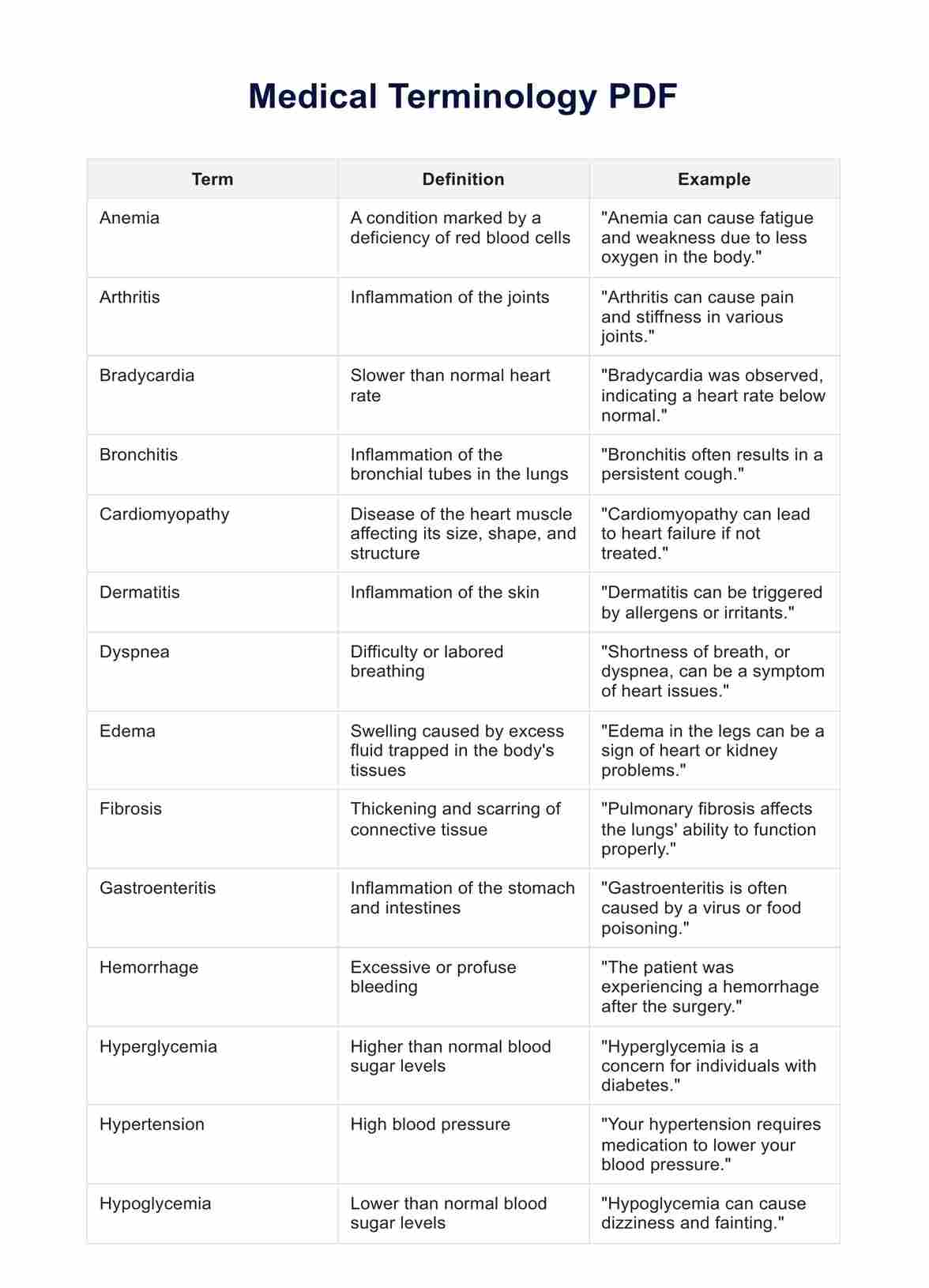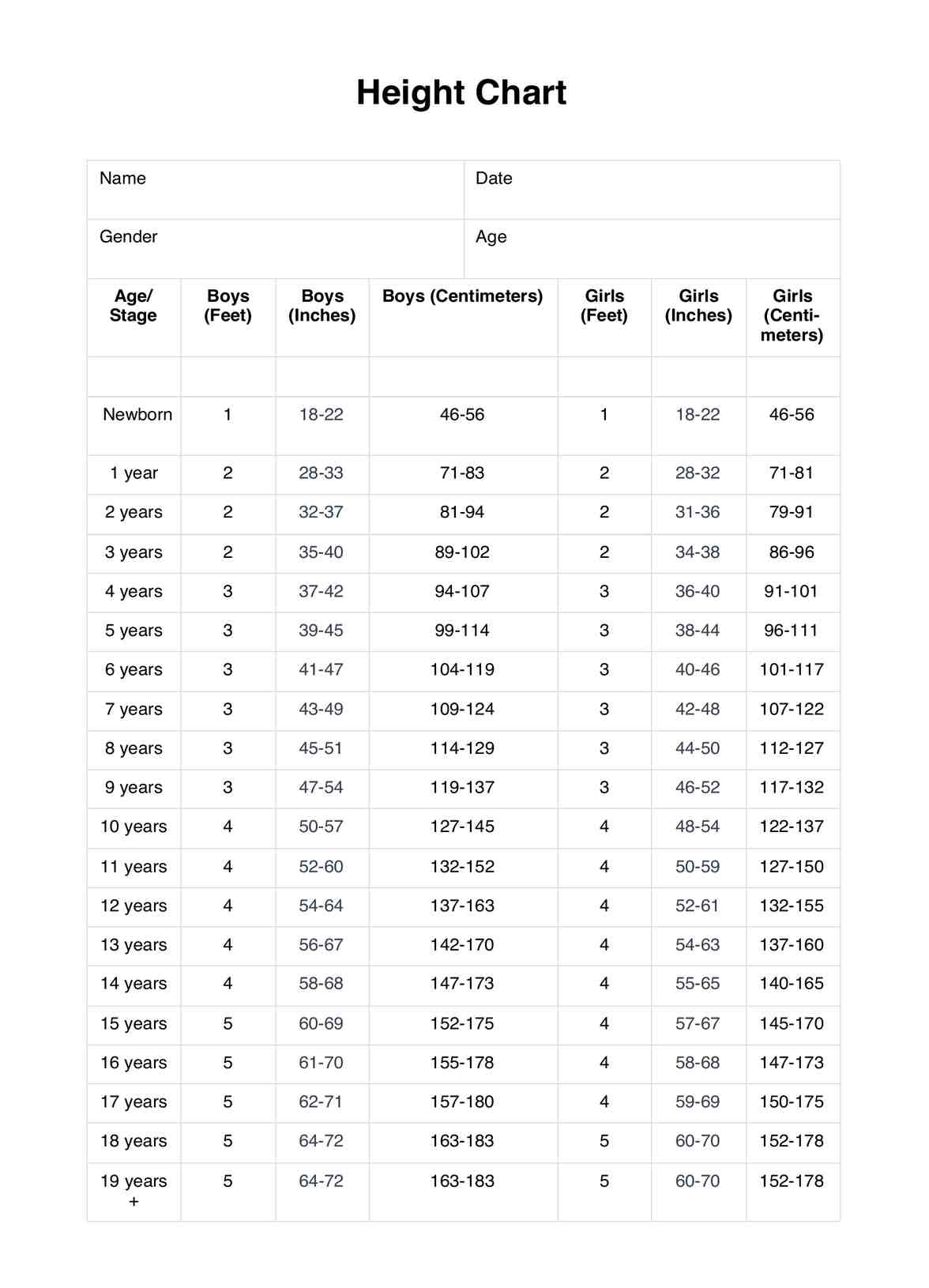Autoimmune Paleo Diet Food
Streamline your Autoimmune Paleo Diet with our comprehensive food list. Ideal for managing autoimmune conditions. Download the PDF now!


What Is an Autoimmune Paleo Diet Food List?
The autoimmune paleo diet (AIP) manages autoimmune disease symptoms through a specialized dietary approach that removes potential triggers. It's an extension of the paleo diet that focuses on alleviating conditions like rheumatoid arthritis, lupus, celiac disease, or Hashimoto's thyroiditis.
The Autoimmune Paleo Diet Food List is essential for individuals seeking relief from autoimmune conditions. It provides a comprehensive catalog of foods allowed and restricted on the AIP diet, offering clear guidance on what to include and exclude from one's daily meals. This resource typically spans 200 to 300 words and is a concise yet informative introduction to the AIP diet food list.
The list typically emphasizes the following key points:
- Permitted Foods: It highlights nutrient-dense foods known to be anti-inflammatory and gentle on the digestive system. These often include a variety of vegetables, fruits, lean proteins, and healthy fats. The list outlines the importance of organic, grass-fed, and pasture-raised options whenever possible.
- Restricted Foods: The resource details foods typically excluded from the AIP diet due to their potential to trigger or exacerbate autoimmune reactions. These usually encompass grains, legumes, dairy, processed foods, and nightshades.
- Emphasis on Healing: The AIP diet is not just about elimination but also about incorporating foods that promote healing and gut health. It may recommend bone broth, fermented foods, and nutrient-rich organ meats.
- Personalization: It recognizes that individuals may experience variations in their responses to specific foods and encourages a personalized approach to the AIP diet. It advises keeping a food journal to monitor symptoms and determine which foods may be problematic for individual cases.
The Autoimmune Paleo Diet Food List is a valuable starting point for those considering or already following this dietary protocol. It empowers individuals with the knowledge to make informed food choices that can mitigate autoimmune symptoms and improve their overall well-being.
Autoimmune Paleo Diet Food Template
Autoimmune Paleo Diet Food Example
How Does It Work?
The Autoimmune Paleo Diet (AIP) is a comprehensive dietary approach tailored to individuals with autoimmune conditions. This protocol aims to reduce inflammation, support the immune system, and alleviate symptoms through a targeted diet. Here's a breakdown of how it works:
1. Elimination Phase (Approximately 4-6 Weeks)
- Remove Inflammatory Foods: Avoid potential triggers such as grains, legumes, dairy, processed foods, eggs, nuts, seeds, nightshades, and artificial additives. This helps calm the immune response.
- Focus on Healing Foods: Emphasize nutrient-dense, anti-inflammatory foods like vegetables, fruits, lean meats (preferably grass-fed and pasture-raised), fatty fish, and healthy fats such as avocado and coconut oil.
- Support Gut Health: Incorporate gut-healing foods like bone broth, fermented vegetables, and organ meats to promote a healthy digestive system.
- Stress Management: Manage stress through techniques like meditation, yoga, and deep breathing, as stress can exacerbate autoimmune symptoms.
2. Reintroduction Phase
- Systematic Reintroduction: After the elimination phase, gradually reintroduce excluded foods one at a time, observing for any adverse reactions or symptoms. This helps identify specific triggers.
- Personalization: Tailor your AIP diet based on your responses. Some foods may be well-tolerated, while others may need to be permanently avoided.
- Continual Monitoring: Keep a food diary to track your reactions to reintroduced foods, ensuring a data-driven approach to your AIP journey.
3. Maintenance Phase
- Long-Term Diet: Once you've identified which foods are safe for you, maintain a diet that excludes trigger foods and emphasizes those that support your health and well-being.
- Lifestyle Factors: Manage stress, prioritize sleep, and exercise regularly to support overall health.
When Would You Use This List?
The Autoimmune Paleo Diet Food List is a valuable resource for a range of individuals, especially those dealing with autoimmune conditions, healthcare practitioners, and anyone looking to adopt a dietary approach focused on reducing inflammation and improving their overall well-being. Here are scenarios in which this list proves to be highly useful:
- Dietary Management: If you've been diagnosed with an autoimmune disease, the AIP diet can be a powerful tool to help manage your condition. This list is your go-to guide for understanding which foods to include and which to avoid.
- Symptom Relief: When experiencing autoimmune symptoms such as joint pain, fatigue, skin issues, or digestive problems, the AIP diet, supported by this list, can help identify and eliminate potential triggers that worsen your symptoms.
- Dietary Transition: If you're transitioning to the AIP diet from a standard diet, this list is essential for adapting your meal planning and ensuring you adhere to the dietary restrictions.
- Patient Guidance: Healthcare practitioners, including doctors, nutritionists, and dietitians, can recommend the AIP diet and provide this food list as a resource to patients with autoimmune conditions. It serves as an apparent reference for dietary guidance.
- Monitoring Progress: Practitioners can use the list to monitor their patient's adherence to the AIP diet and assess its impact on their health, enabling better-informed treatment decisions.
- Preventive Health: Even without autoimmune conditions, individuals interested in preventative health and reducing inflammation can benefit from the AIP diet. This list is a starting point for building a healthier, anti-inflammatory diet.
- Healthy Lifestyle: For those looking to adopt a more holistic and health-conscious lifestyle, the AIP diet, with the help of this list, can be a practical dietary choice.
What Do the Results Mean?
The Autoimmune Paleo Diet (AIP) and its Food List can lead to various outcomes. Understanding these outcomes is crucial for assessing the diet's impact on health conditions. Here are some common results and their interpretations:
- Lessened Inflammation: Many individuals with autoimmune conditions report reduced inflammation, leading to decreased symptoms like joint pain, fatigue, skin issues, and digestive problems. This indicates that the AIP diet is effectively addressing underlying inflammation.
- Improved Energy: Increased energy levels and reduced fatigue are often observed, suggesting that the diet positively impacts energy metabolism and overall vitality.
- Reintroduction Insights: Identifying specific trigger foods becomes possible during the reintroduction phase. If certain foods cause a return of autoimmune symptoms, it's a clear sign that those items should be permanently avoided.
- Personalized Diet: Results show that the AIP diet is customizable based on individual reactions to specific foods. This personalization ensures that dietary choices align with one's unique needs.
- Digestive Comfort: Many individuals experience improved digestive health, less bloating, gas, and discomfort. This indicates that the AIP diet supports gut healing.
- Better Nutrient Absorption: Improved nutrient absorption is a positive outcome, as a healthy gut allows the body to utilize essential vitamins and minerals effectively.
- Weight Loss or Maintenance: Weight management results may vary. Some individuals may experience weight loss, while others may maintain their weight. These outcomes depend on individual metabolism and dietary choices within the AIP guidelines.
- Reduced Cravings: The AIP diet often reduces cravings for processed and inflammatory foods, leading to healthier food choices.
- Better Quality of Life: Improved overall well-being, including mood and quality of life, is a common result. AIP's anti-inflammatory focus can positively impact mental health and emotional stability.
- Holistic Health: The results reflect a holistic approach to health, addressing physical symptoms and emotional and psychological aspects.
Research & Evidence
The Autoimmune Paleo Diet (AIP) is rooted in the paleo diet, which takes cues from the eating habits of our Paleolithic ancestors (Ballantyne, 2022). The core principle of the AIP diet is that our bodies are naturally adapted to the foods consumed during this ancient era, which primarily consisted of whole, unprocessed foods.
Throughout history, traditional societies have valued the therapeutic properties of certain foods. Ingredients like bone broths, organ meats, and fermented foods, integral to the AIP diet, have been recognized for their healing attributes over centuries (Bigley II, 2023).
Modern research consistently supports the AIP diet's effectiveness in reducing systemic inflammation, a common contributor to autoimmune diseases (Eustice, 2023). Eliminating potential triggers like grains, dairy, and processed items significantly contributes to this reduction.
Scientific studies highlight the vital link between gut health and autoimmune conditions. The AIP diet, rich in foods that nurture a healthy gut microbiome, has enhanced digestive health (Ruscio, 2023).
Although more research is warranted, clinical trials and studies have revealed the AIP diet's potential to alleviate autoimmune symptoms, with some trials demonstrating substantial reductions in symptoms and improved quality of life among participants (Velikova, 2022).
The AIP diet stands out for its nutrient-dense focus, emphasizing a broad spectrum of essential vitamins and minerals (Young, 2023). This emphasis on nutrient-rich foods is well-supported by research to promote overall well-being.
One of the AIP diet's strengths is its adaptability, recognizing that individual responses to specific foods vary. This adaptability allows for a highly personalized approach to the diet.
Furthermore, research recognizes the holistic nature of the AIP diet. It doesn't merely address physical health but extends its benefits to emotional and mental well-being, aligning with modern understandings of comprehensive health and wellness.
References
Ballantyne, S., Ph.D. (2022, October 17). What to eat on the autoimmune protocol. The Paleo Mom. https://www.thepaleomom.com/what-to-eat-on-the-autoimmune-protocol/
Bigley II, J. (2023, June 28). A little of this and that: Your guide to the AIP diet. Cleveland Clinic. https://health.clevelandclinic.org/aip-diet-autoimmune-protocol-diet/
Eustice, C. (2023, October 17). The Autoimmune Protocol diet: Does it help rheumatoid arthritis symptoms? EverydayHealth.com. https://www.everydayhealth.com/rheumatoid-arthritis/autoimmune-protocol-diet-aip-diet-ra/
Ruscio. (2023, October 31). A Guide to the AIP Diet For Beginners. Dr. Michael Ruscio, DC. https://drruscio.com/aip-diet-for-beginners/
Velikova, L., MD PhD. (2022, February 2). What is the Autoimmune Protocol (AIP) diet, and does it work? MedAlertHelp.org. https://medalerthelp.org/blog/aip-diet/
Young, S. (2023, September 14). Autoimmune Protocol (AIP) diet guide, benefits, food list. PrimeHealth Denver. https://primehealthdenver.com/autoimmune-protocol-diet/
Commonly asked questions
Autoimmune Paleo Diet Food Lists are helpful because they provide a clear guide for individuals with autoimmune conditions, helping them identify safe and triggering foods, manage their symptoms, and make informed dietary choices.
Autoimmune Paleo Diet Food Lists are used when individuals want to follow the Autoimmune Paleo Diet to alleviate autoimmune symptoms, manage inflammation, and promote overall well-being. They are particularly beneficial for those with autoimmune conditions.
Autoimmune Paleo Diet Food Lists refer to the list of foods to include and avoid when planning meals. Users can personalize the list based on their sensitivities and preferences, ensuring a tailored approach to the diet.
The duration of following an Autoimmune Paleo Diet Food List varies from person to person. It's often followed for at least 4-6 weeks during the initial elimination phase, but the diet's duration can be extended or customized based on individual responses and needs.


